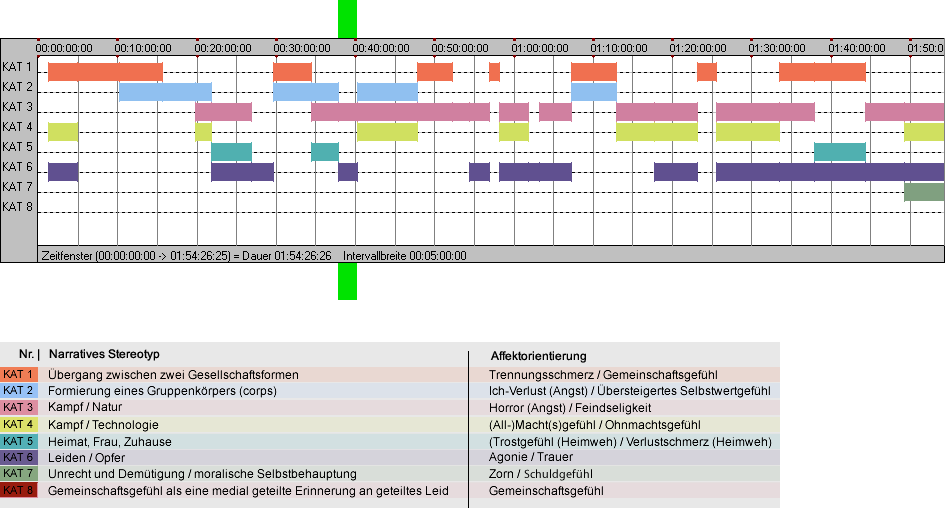Death in a palm tree*
Classification in categories
- Battle and nature
- Suffering / victim / sacrifice


Metadata
Number: 10
Individual analysis: Bataan*
Timecode start: 00:37:54:24
Timecode end: 00:40:15:29
Year of origin: 1943
The character of Sergeant Dane, who appears at the beginning and the end, brackets the scene with the aid of a zoom out from him at the beginning and a zoom in to him at the end. This structure provides the framework for a scene that can be divided into two parts on the level of sound design: slowly building tension during the silence that accompanies the ascent (> EMU 1) and the musical manifestation of mourning following a short relaxation and the abrupt shock of the peripeteia (> EMU 2).
The clear change between the units takes place at the moment the sound of rustling palm leaves suddenly becomes loud and there is a cut to an unusual camera perspective: a frontal view of the crown of the palm. Eeps’ smile and deep melodic humming and the staged exchange of glances between Eeps and Matowski create a change to a relaxed mood which, however, alters suddenly. The loud bang of the gunshot, the piercing, shrill scream and the staccato of the montage of close-ups of the soldiers against the striking musical background mark a temporal sequence of affective stages from shock to surprise and finally mourning. In this way the soldier’s sacrifice and the group’s mourning are staged as being related to one another.
Expressive movement units
01 02Materials about the scene
Position of the scene in the film





